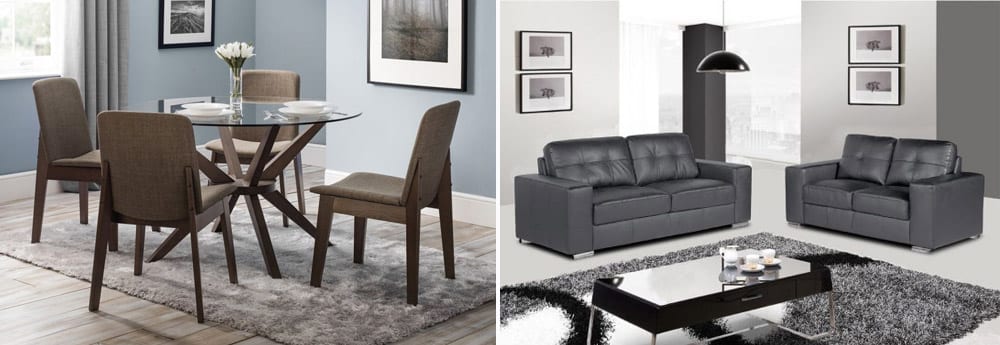Nothing can compare with the joy of designing your own home exactly the way you want it. The layout of each room is an important consideration when it comes to décor and design. It will have a big impact on how aesthetically pleasing, comfortable and functional a room will be.
When you’re working with a particular living space, such as your kitchen or bathroom, for example, there are certain fixtures and fittings that can’t be rearranged. However, when working with open areas, like your living room or dining room, there are elements you can reorganise to suit your preferences, such as the furniture, rugs or artwork.

The secret is striking a fine balance to best accommodate the flow of foot traffic in, out and around the room, while also being clear on the elements that can’t be altered. Don’t have over-ambitious ideas that are impossible to achieve – work within sensible boundaries to avoid disappointment.
Make sure your plans adhere to your budget, which should be pre-determined before you start carrying out any practical changes.
Leave enough space
A good room layout enables people and animals to easily move around. When you’re thinking of buying new furniture, a good rule of thumb is to use the size of one person as a guide to how much room you need to leave around fixed items. These can include built-in cabinets or access areas, such as doorways and French windows.
If you think it will be a tight squeeze for one person to navigate around a new piece of furniture in a particular spot, then it’s best not to install it, as it will become irritating when you have to squeeze around badly-placed items that are too large for their surroundings.
Generally speaking, leave around 48 inches around a piece of furniture to allow sufficient space to allow people to pass by unhindered. If you’re dealing with a very large space, you can leave a larger area that’s proportionate to the size of the room.
Avoid tight squeezes
In smaller areas, make sure the access to desks, wardrobes or cupboards isn’t too cramped, as this can become stressful – don’t forget to allow for doors that need to open and close freely. Even if it seems to be saving space by cramming items together, this will be countered by a lack of convenience.
When adding a new dining table and chairs, make sure you can pull out the chairs and sit down comfortably. There’s nothing worse than trying to squeeze in and out of a dining chair when there isn’t enough room to pull it out fully.
Use the same rule of thumb when it comes to accessing important features such as light switches, plug sockets or air conditioning units. Work out the most logical way of moving around the space, taking all of these things into consideration, so you can plan the layout of the furniture appropriately.
Safety first
The safety of children and the elderly should always be considered when you are devising a new floor plan.
Avoid tripping hazards such as pouffes and footstools. Pay attention to furniture items like coffee tables, where it may be better to have a smooth circular or oval design, rather than sharp corners that someone could walk into.
Talking of coffee tables, make sure the distance from the edge of the settee to the coffee table is wide enough to allow people to walk past and to sit down comfortably. Around 18 inches is a suitable minimum distance to accommodate the average person, although you may wish for more space, so use your own judgment.
Focal point
Once you’ve defined the area and utilised spatial awareness, it’s time to fine-tune your action plan and finalise the design. Create a focal point, such as a flat screen television or fireplace in the living room, positioning the other furniture to make the best use of this centrepiece.
In rooms where there isn’t an obvious focal point, choose a functional item like a table or something visually pleasing (like wall art), arranging the furniture with this in mind. Create a space where it’s easy for people to gather and talk, such as an arrangement of chairs positioned on an appealing rug.
This is of particular benefit in larger rooms, where you can create an “island” of interest to make the space appear cosier. You can use the room’s natural architectural elements to guide you, such as the location of built-in furniture, the windows, alcoves and fixtures such as wall lighting.
Let Us Furnish
Having a well thought-out plan before you begin is the key to the ultimate success of your project. Let Us Furnish offers a complete furniture solution, providing furniture packs and bespoke solutions for every type of accommodation.
We can help you to create the ideal investment property, with furniture rental packages to suit all budgets. For more details of our range of products and professional services, please contact us today.
